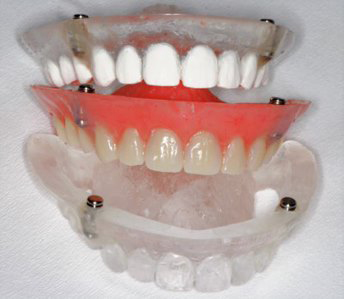
David Burgess describes a new dynamic navigation protocol for edentulous case planning and implant placement.
The use of dynamic navigation for dental implant treatment is becoming more widespread, enabling surgeons to visually monitor the progress of the drill throughout implant site preparation.
The first version of Navident, introduced in 2015, required a radiographic marker to be attached to the teeth to establish a connection between the patient’s jaw and the virtual cone beam computed tomography (CBCT) image. A graphic representing the drill appears on the CBCT throughout implant site preparation, enabling greater precision and safety. Navident 2.0 avoids the need for a radiographic marker, as the outline of the selected reference areas, usually teeth, can be traced to the corresponding areas on the CBCT scan. This technique is known as trace registration and has simplified the workflow of dynamic navigation for dentate patients.
Considering the options
The challenge has been to develop a protocol for trace registration in edentulous and full-arch cases where there are no reference teeth to trace. Alternative options needed to be considered to establish the connection between the patient’s jaw and the virtual CBCT image, and to develop a consistent step-by-step protocol to place dental implants to support full-arch restorations.
The first step of this new protocol is acquiring a 3D model of the jaw. An immediate temporary bridge is made to be fitted to the implants at the time of surgery and a radiopaque replica is produced for the treatment planning. Accurate and predictable planning and placement of the implants is achieved with a modular guide. A supporting frame for the modular overlays is developed to transfer the temporary bridge from a laboratory model to the mouth, and to fabricate the permanent bridge once the implants are integrated. Ring radiographic markers enable registration of the…
Register to access the full article & more exclusive content
Sign up to receive free access to a range of premium articles, podcasts, webinars and enhanced CPD.
Register
Login
Let’s block ads! (Why?)





